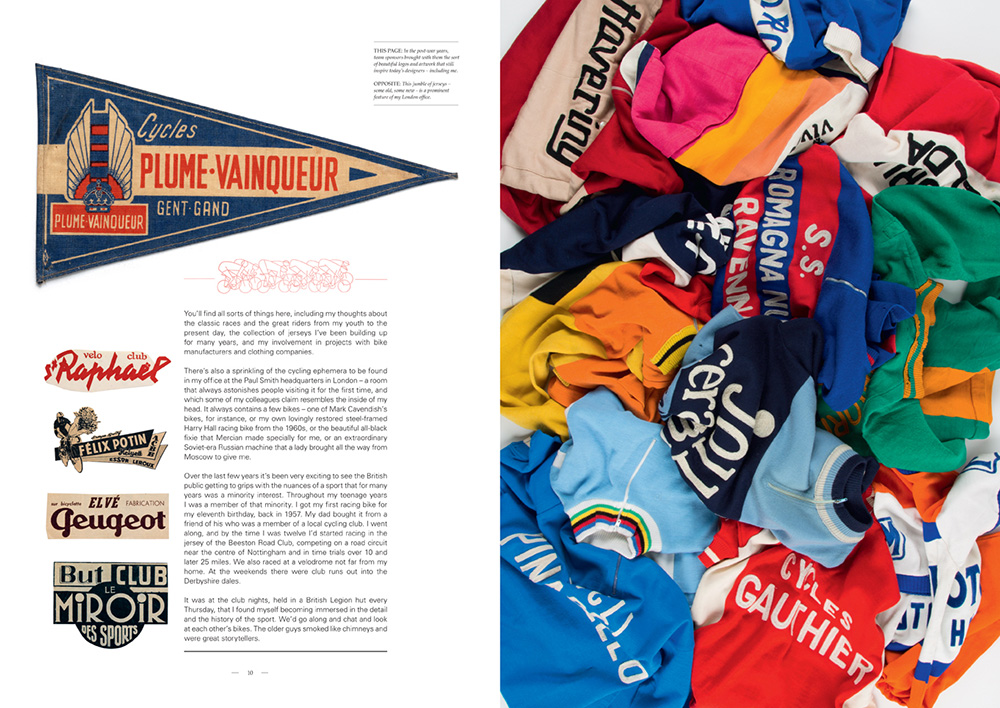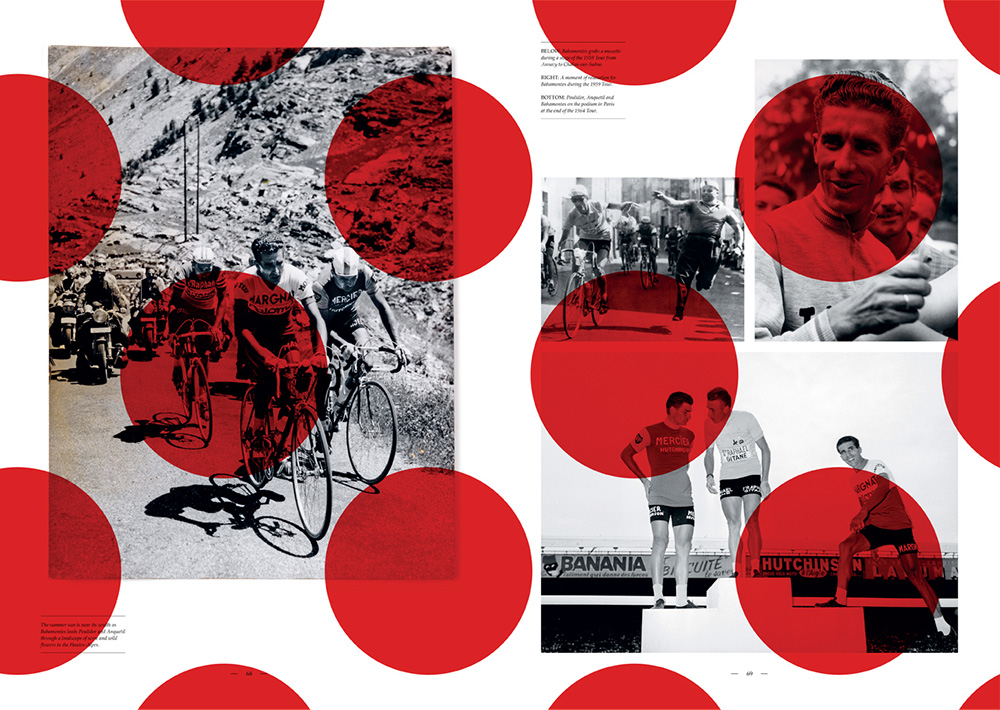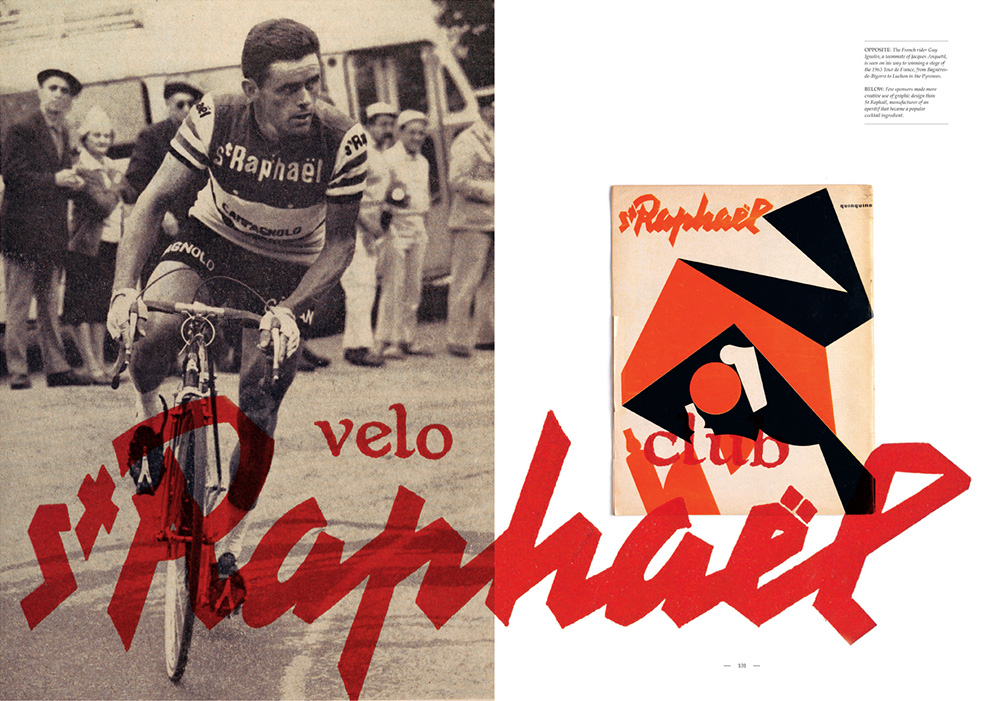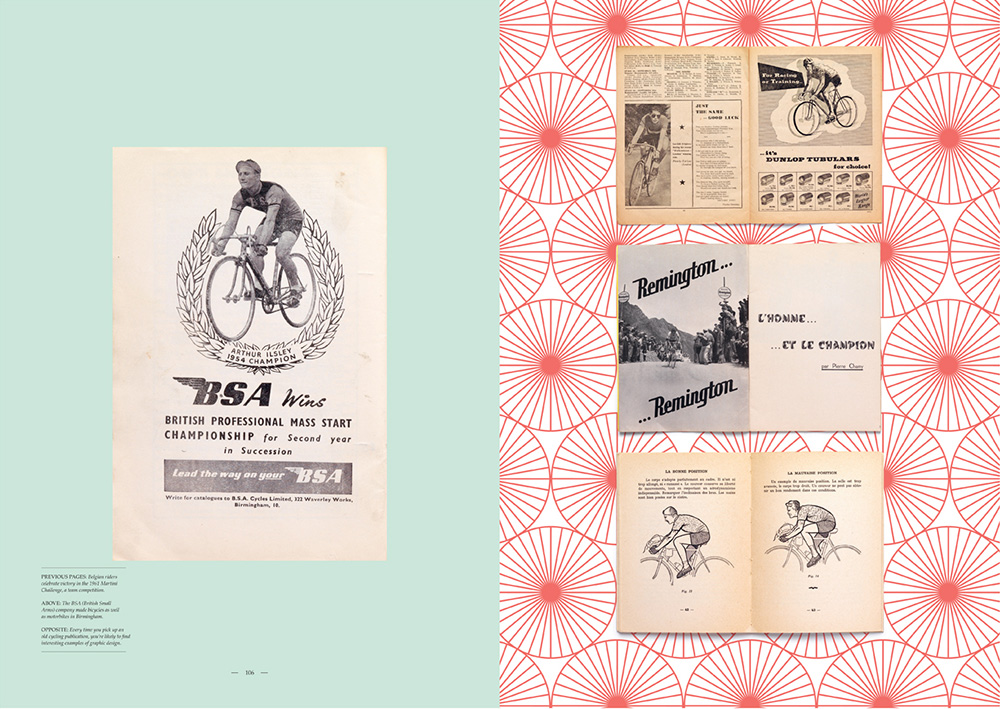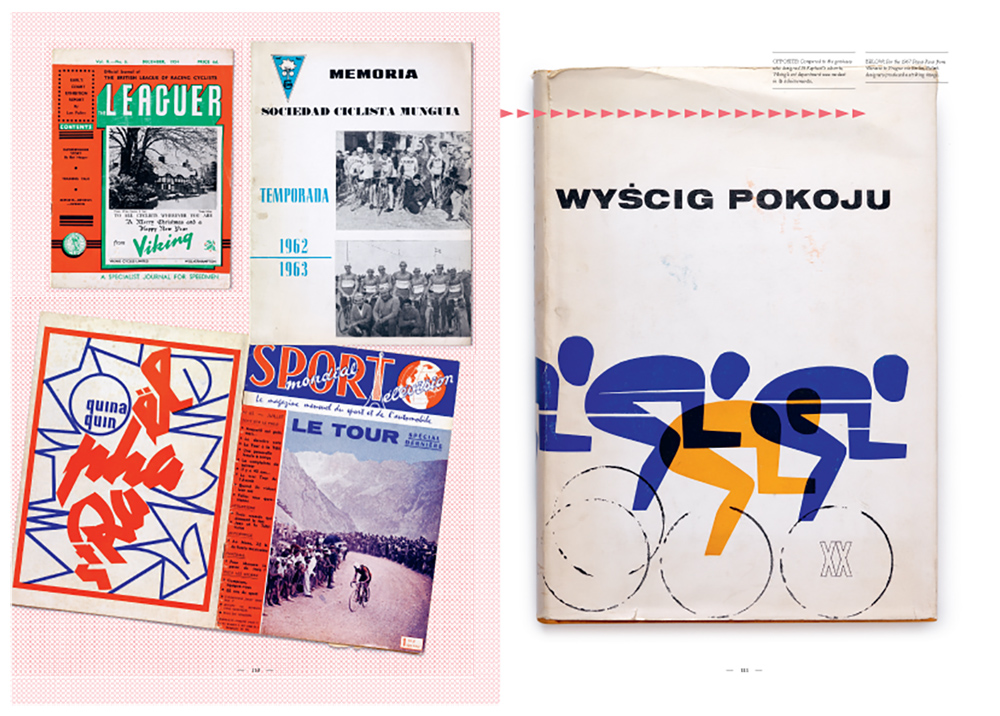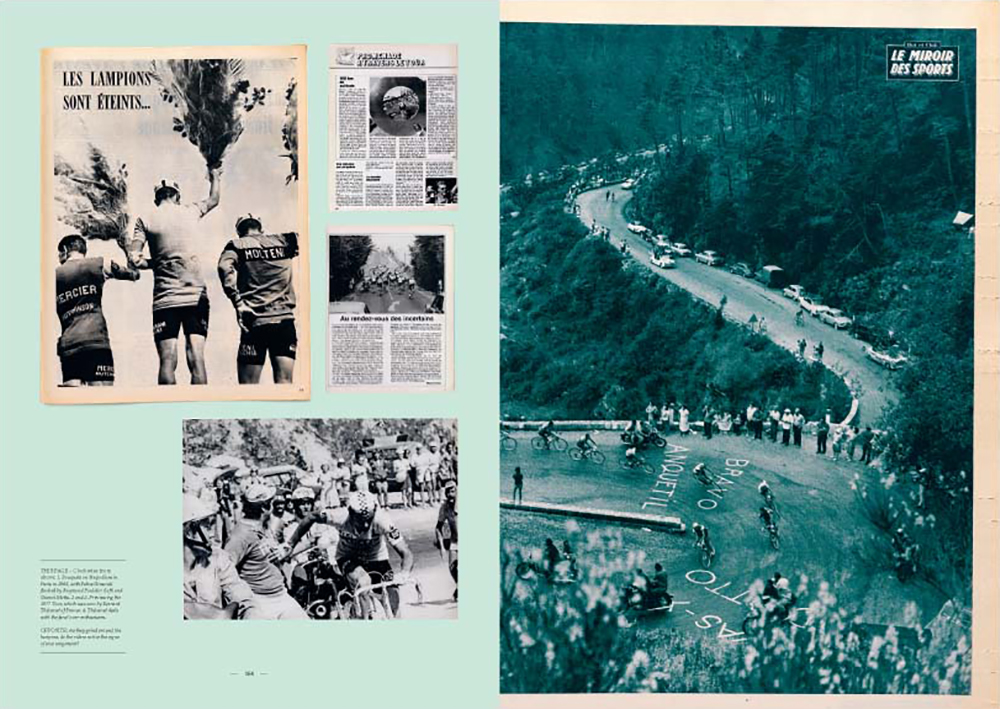As the 99th Giro d’Italia cycling race gets underway, celebrated English designer Paul Smith shares an exclusive excerpt from his new book, in which he recalls designing the leader’s jersey for this iconic, three-week long tour of Italy
Knighted by the Queen in 2000 for services to fashion, Paul Smith is one of the most celebrated British designers working in the fashion industry today. Since he opened his first shop in his hometown Nottingham in 1970, he has been consistently lauded as one of the best menswear designers and is the recipient of many awards in fashion and the arts. His impact on everyday style is also considerable; he has been credited as single-handedly reviving the boxer short as the underwear of choice for men.
But it was not always going to turn out this way. Smith’s childhood dream was not to be a designer, but a racing cyclist. Were it not for a serious crash at the age of 17, this might have been the case. Convalescing, Smith discovered tailoring and his life took a different path. Despite this, he has retained a real love for the sport (as is evident in his friendships with champion cyclists Bradley Wiggins and Chris Hoy). He also owns a vast collection of cycling memorabilia, most of which is documented in his latest book: Paul Smith’s Cycling Scrapbook, published by Thames & Hudson.
As the first stage of the Giro d’Italia – one of the three central ‘grand tours’ of the road racing calendar – begins, we publish a short extract from Paul Smith’s Cycling Scrapbook.
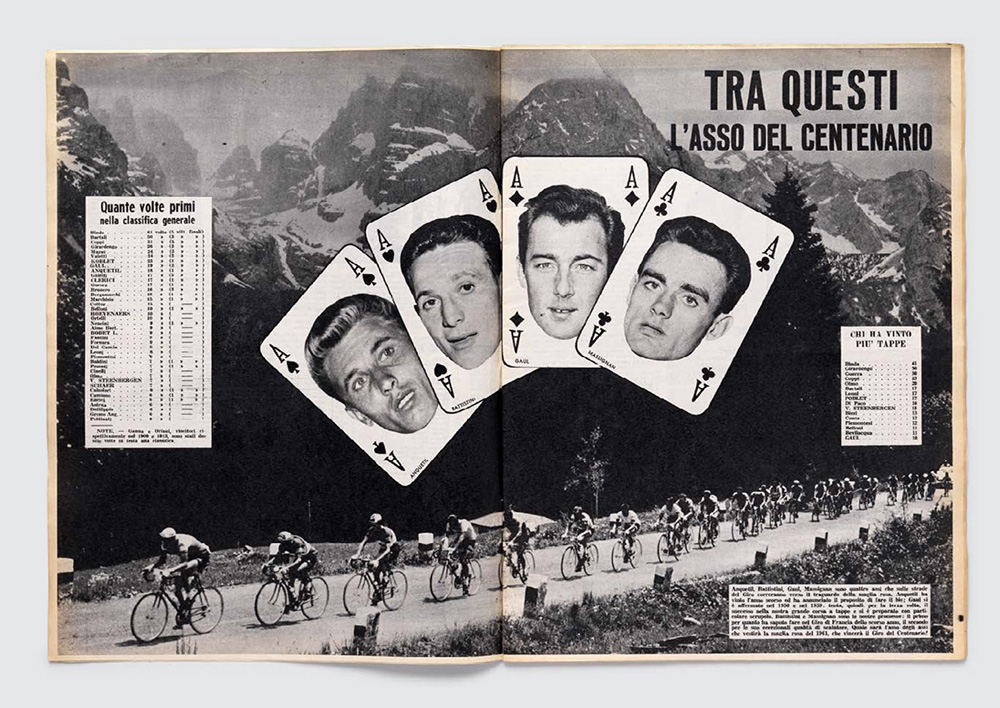
Paul Smith:
The Giro d’Italia is the first Grand Tour of the year, and the start of all those days from spring to autumn when cycling fans would rather be spending their afternoons watching the riders on television than getting on with their work.
It has been going almost as long as the Tour [de France], but it has a very different feeling. Because of the time of year, the weather is more challenging and can become pretty dangerous. And, of course, it’s very Italian. I don’t know how to explain what I mean by that. Perhaps you could say that it’s a little bit more stylish than the Tour, and maybe more commercial. And some of the places it goes to are magical.
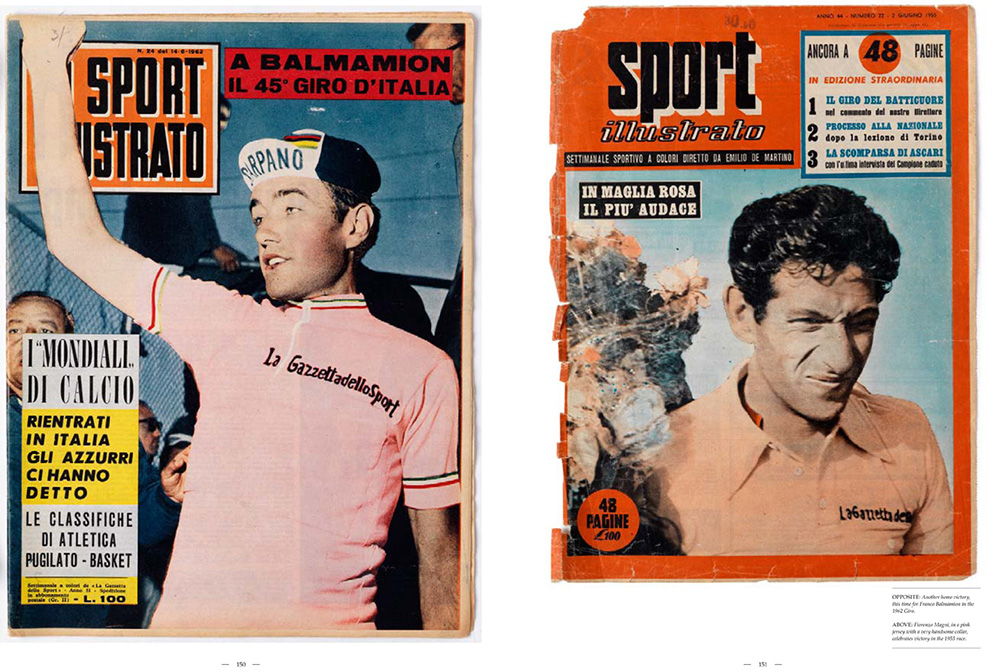
It was founded in 1909, six years after the Tour, to promote sales of Italy’s leading daily sports paper, La Gazzetta dello Sport, which had already been associated with the Giro di Lombardia and Milan–San Remo, founded in 1905 and 1907 respectively. The Giro was to be the crowning glory of Italian cycling – and since the Gazzetta is always printed on pink paper, that became the colour associated with the race. Milan, where the newspaper has its head office, became the Giro’s headquarters.
The pink jersey, awarded to the leader in the general classification, was adopted in 1931, and was first worn by Learco Guerra, a great figure of Italian cycling who won four stages that year but missed out on the eventual victory. Three years later he captured ten stages and took the overall win for the first and only time. After the war he served as directeur sportif for two other Giro winners, Hugo Koblet and Charly Gaul.
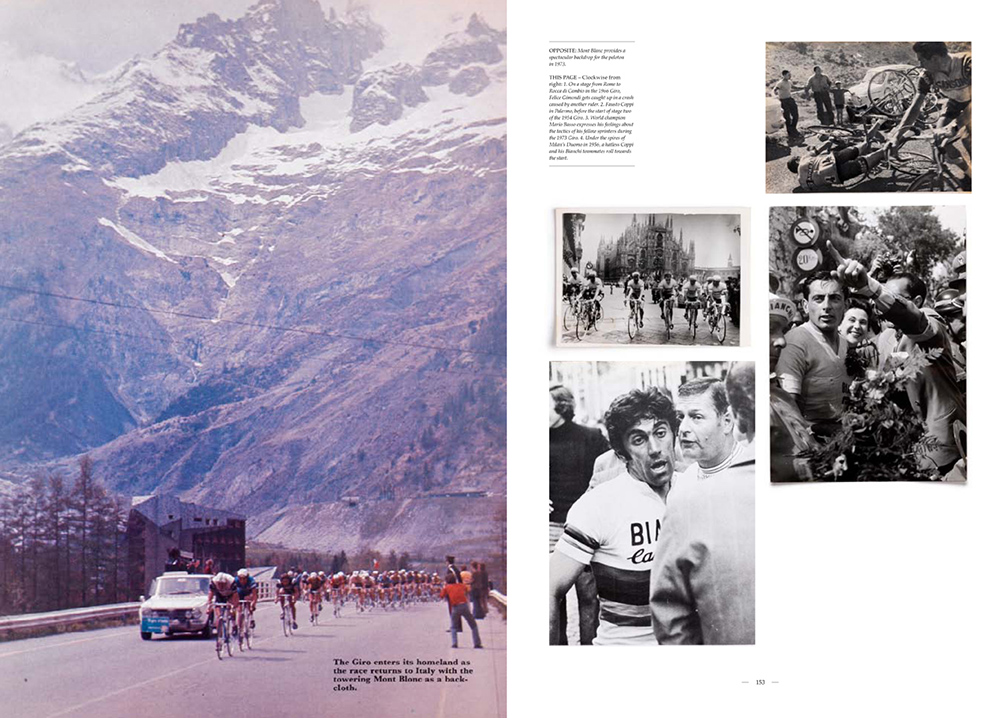
The race had been dominated in the 1920s by Alfredo Binda, another legendary figure, who won the Giro a record five times between 1925 and 1933. In that last year he also won the King of the Mountains jersey, awarded for the first time. Gino Bartali won three Giros between 1936 and 1946, but his younger rival Fausto Coppi came along to take five wins between 1940 and 1953. There were a lot of classy winners in the 1950s and ‘60s – Gaul, Fiorenzo Magni, Jacques Anquetil and Franco Balmamion, who each won twice – before Eddy Merckx came along in 1968, winning the first of his five Giros (including three in a row between 1972 and 1974 – a feat never matched).
Bernard Hinault won three in the 1980s, Stephen Roche became the first English-speaking rider to win, in 1987 (the year he also won the Tour and the world championship), Miguel Indurain won two in the 1990s, and in 1998 Marco Pantani became the last man to complete the double of Giro d’Italia and Tour de France in the same year.
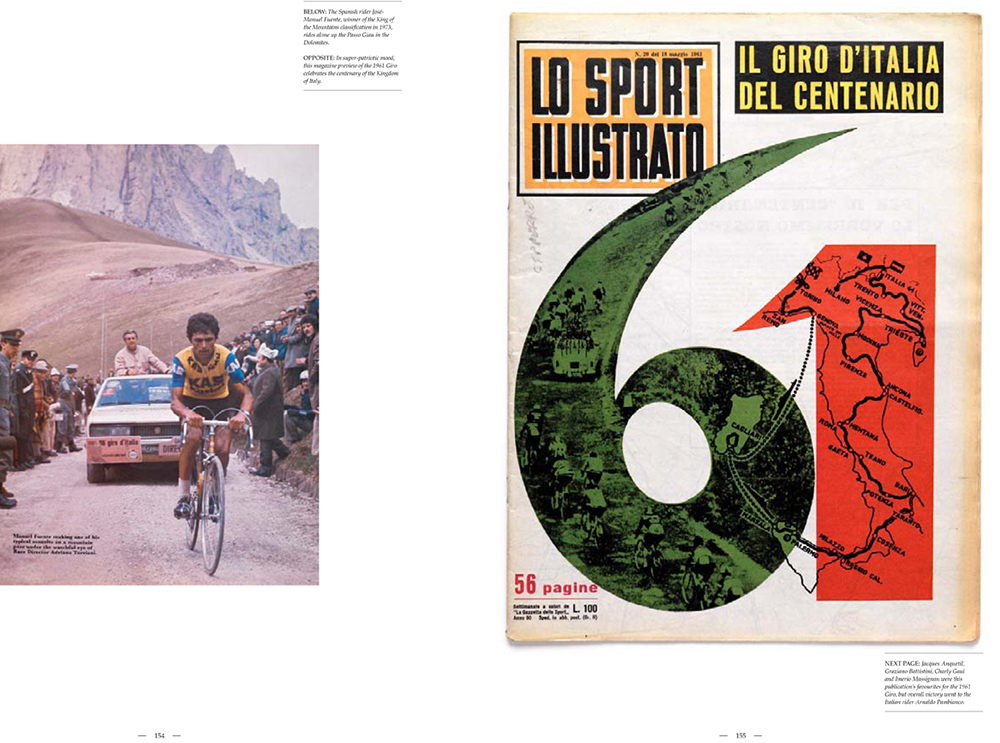
Because it’s held in late May and early June, and because the route normally takes in the mountain passes of the Alps and the Dolomites, the riders can usually count on a day or two in which they’ll need every item of weather protection they can lay their hands on. Some years they find themselves riding between high banks of snow, or descending in freezing rain. The conditions can be brutal enough to force some to abandon the race, and to reduce others to tears of pain and frustration, while those who struggle through attain the status of instant heroes.
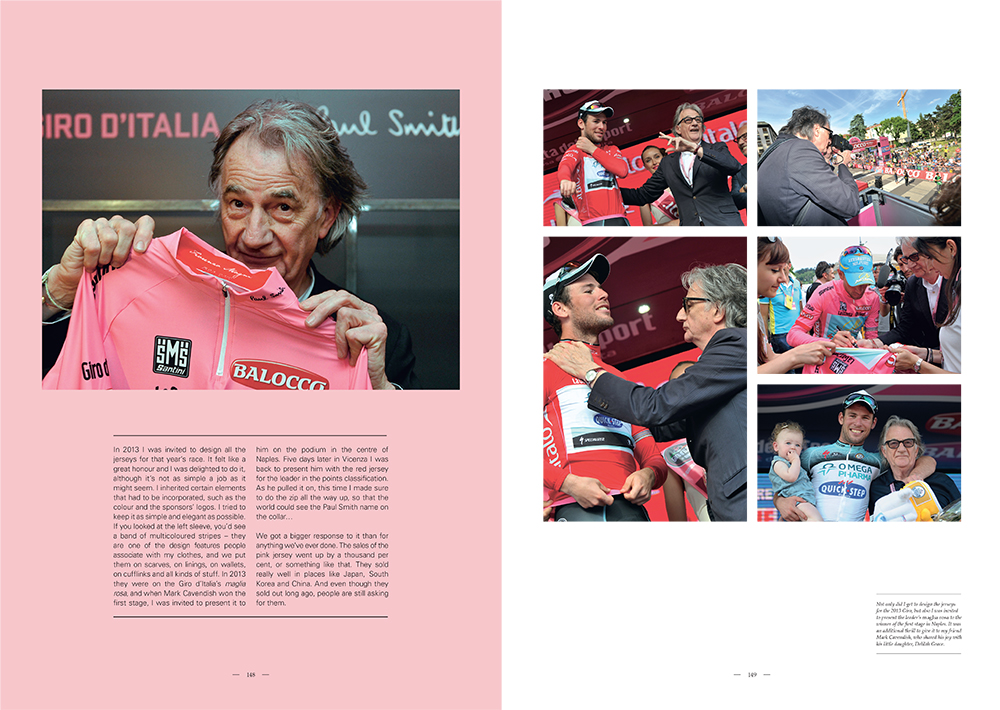
In 2013 I was invited to design all the jerseys for that year’s race. It felt like a great honour and I was delighted to do it, although it’s not as simple a job as it might seem. I inherited certain elements that had to be incorporated, such as the colour and the sponsors’ logos. I tried to keep it as simple and elegant as possible. If you looked at the left sleeve, you’d see a band of multicoloured stripes – they are one of the design features people associate with my clothes, and we put them on scarves, on linings, on wallets, on cufflinks and all kinds of stuff. In 2013 they were on the Giro d’Italia’s maglia rosa, and when Mark Cavendish won the first stage, I was invited to present it to him on the podium in the centre of Naples. Five days later in Vicenza I was back to present him with the red jersey for the leader in the points classification. As he pulled it on, this time I made sure to do the zip all the way up, so that the world could see the Paul Smith name on the collar…
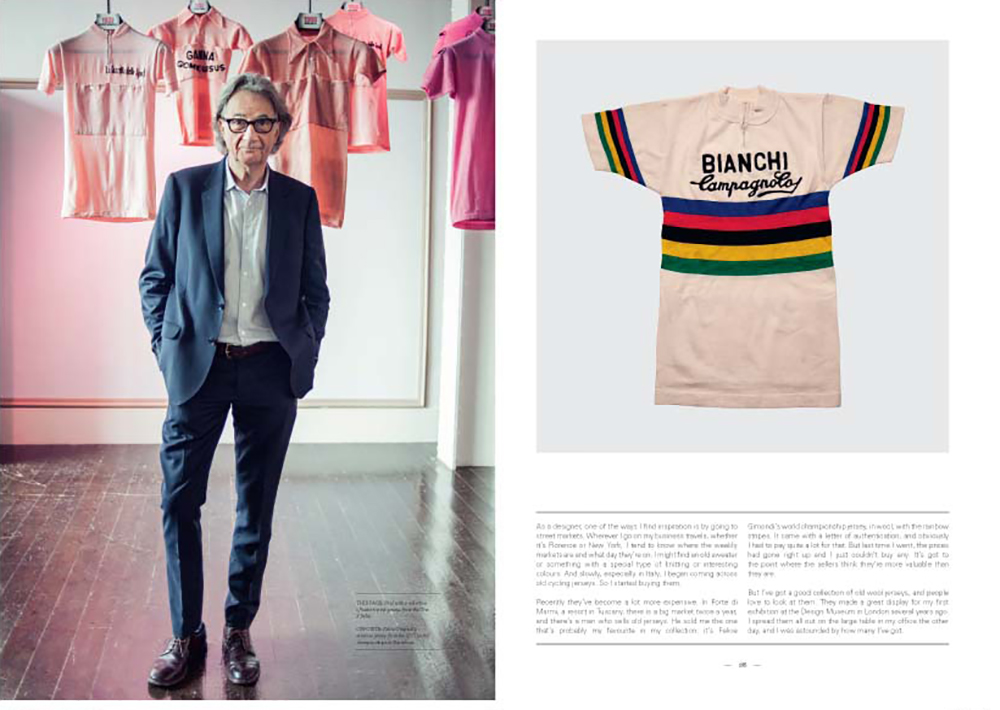
We got a bigger response to it than for anything we’ve ever done. The sales of the pink jersey went up by a thousand per cent, or something like that. They sold really well in places like Japan, South Korea and China. And even though they sold out long ago, people are still asking for them.
Paul Smith’s Cycling Scrapbook by Paul Smith and Richard Williams, designed by Alan Aboud, will be published by Thames & Hudson on 23 May

